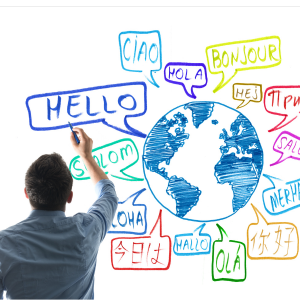The Role of AI in Language Translation

Introduction
In today’s interconnected world, communication across different languages is crucial. Artificial Intelligence (AI) has emerged as a game-changer in language translation, making it more efficient and accurate than ever before. This article delves into the transformative role of AI in global communication, highlighting its benefits, challenges, and future potential.
AI-Powered Translation: A Revolution
AI-powered translation tools have revolutionized the way we bridge language gaps. These tools utilize complex algorithms and machine learning to continually improve translation accuracy. What sets AI translation apart is its ability to understand contextual nuances, resulting in more reliable and natural translations.
Enhancing Global Communication
The impact of AI on global communication cannot be overstated. Businesses and individuals can now cater to international audiences seamlessly, erasing language barriers. This breakthrough has opened up avenues for global trade, education, and cultural exchange, fostering connections that were once hindered by linguistic limitations.
Accuracy and Efficiency
One of the most significant advantages of AI in translation is its enhanced accuracy and efficiency. Unlike traditional methods, AI systems can quickly translate vast amounts of text, saving valuable time and resources. Moreover, these systems continuously learn from their mistakes, constantly improving their performance.
Challenges and Solutions
Although AI translation has made remarkable strides, it still faces challenges in understanding idiomatic expressions and cultural nuances. However, ongoing advancements in AI technology are addressing these issues, promising even more accurate and nuanced translations in the future. As AI continues to evolve, it will undoubtedly become more adept at grasping cultural and linguistic subtleties.
The future of AI translation holds tremendous promise. We can look forward to more intuitive and interactive translation tools, capable of providing real-time translations during conversations. This progress will further break down language barriers, leading to a more connected and empathetic world.
Conclusion
AI’s role in language translation is transformative, bridging gaps between languages and cultures. As AI technology advances, we can expect even more remarkable achievements in this field, making the world a smaller, more interconnected place. With AI at the helm, language will no longer be a barrier to communication, enabling us to understand and appreciate world cultures in unprecedented ways.
3 thoughts on “The Role of AI in Language Translation”
Comments are closed.
[…] The Role of AI in Language Translation […]
[…] The Role of AI in Language Translation […]
[…] 6. Utilize Language Apps and Online Resources: […]